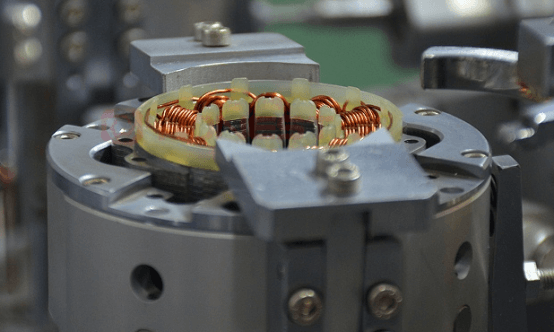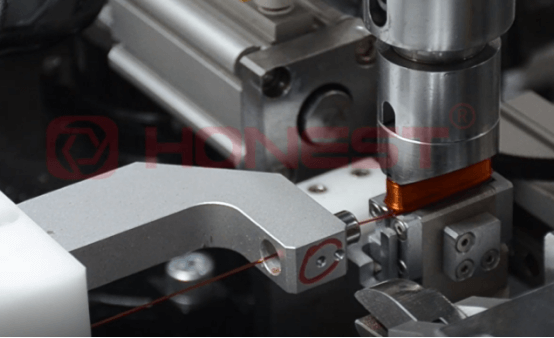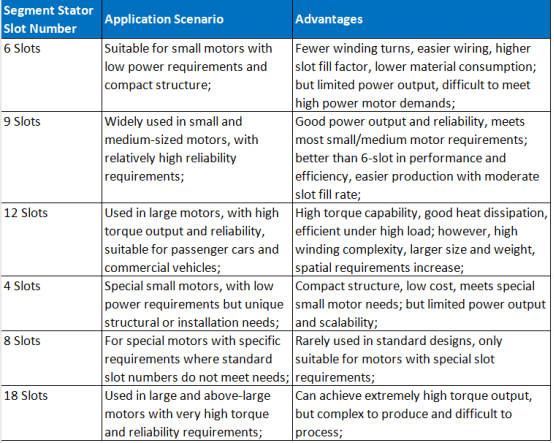
News Center
What Slot Count Fits Your Segmented Stator?
Published on.
2025-07-10 09:24
Source
In the motor manufacturing industry, segmented stator technology has emerged as a key innovation for enhancing motor performance. By improving electromagnetic characteristics and thermal management, it enables more efficient and reliable motor operation, driving technical advancements across the sector. However, with a wide variety of segment stator designs available on the market, each differing in structure, manufacturing process, and application scenarios, many engineers and procurement specialists find the selection process challenging.
Recently, we invited our Technical Director, Mr. Liu, to provide an expert analysis of the various types and technical features of segment stators. His in-depth session offered not only a structured overview of the evolution of segment stator technology but also a clear and practical guide to selecting the appropriate slot count. Whether you're a seasoned engineer or new to the field, the session delivered valuable insights and a solid framework for understanding segmented stator selection.
Next, let’s break down the different types of segmented stators and uncover the key logic behind their technical selection.
Throughout the evolution of stator technology, winding processes have remained a central focus. From manual winding in the early days to today’s automated equipment, each technological shift has aimed to improve winding efficiency and quality, ultimately enhancing overall motor performance. Among traditional stator winding methods, inner winding machines have been widely used. They offer a certain level of automation, improve production efficiency, and maintain basic winding quality for standard motor types. However, when it comes to complex winding requirements or high-precision applications, these machines reveal notable limitations.
One of the key challenges lies in power density. For motors of the same size, achieving higher power output requires a higher slot fill factor. A greater slot fill means more winding conductors can be packed into the available slot space, allowing the motor to carry higher current, generate a stronger magnetic field, and ultimately deliver greater power output.
However, due to the limitations of the inner winding machine’s process and mechanical design, the slot fill factor typically peaks at around 65%. This is far from sufficient for high-performance motors that demand higher power density.

Secondly, many motors operate in low-voltage environments, where achieving the same power output requires significantly higher current. This necessitates conductors with larger cross-sectional areas to reduce resistance and prevent overheating. However, inner winding machines are typically limited to handling wire diameters of approximately 1.5 mm. As a result, they struggle to meet the requirements of high-performance motors that demand thicker wires for low-voltage, high-current applications.
In summary, the limitations of traditional inner winding machines for stator production primarily lie in two areas:
Winding Method: Coils are wound turn by turn directly inside the stator slots, resulting in loose wire arrangements and excessive gaps. This inefficient space utilization restricts the achievable slot fill factor.
Wire Diameter Limitations: The machine's mechanical strength and tension-bearing capacity limit the maximum wire size. Using thicker wires increases the risk of mechanical failure or process instability.
As high-performance motors become the industry standard, improving slot fill factor and enabling the use of thicker conductors has become a critical challenge for motor manufacturers. This demand has led to the emergence of segment stator technology.
Segmented stators divide the stator core into multiple individual tooth segments. Each tooth is wound separately before being welded or assembled into a complete stator. Compared to traditional inner-wound stators, segment stators offer significant advantages in both structure and process flexibility.
Segmented stators are built by dividing the stator core into multiple individual tooth segments. Each tooth is wound separately before the wound segments are welded or assembled into a complete stator. This approach eliminates the constraints of traditional in-slot winding, simplifying the winding process and enabling higher wire packing density and the use of thicker conductors. Compared to stators produced by inner winding machines, segment stators offer significant advantages in both manufacturing flexibility and motor performance.

- Higher Slot Fill Factor: Since each tooth segment is wound individually in an open space, the coil placement can be precisely controlled. This allows for tighter packing of conductors, minimizing gaps and significantly increasing the slot fill factor.
- Greater Wire Diameter Compatibility: The open winding process of segment stators places fewer limitations on wire size. It can easily accommodate 2 mm, 3 mm, or even thicker conductors, making it ideal for low-voltage, high-current motors that require larger wire cross-sections.
- Improved Thermal Performance: The segmented structure of the stator creates more efficient heat dissipation channels between windings. During operation, this facilitates better airflow and faster heat release, reducing winding temperature. As a result, it extends the motor’s lifespan and enhances reliability under high-load conditions.
While segment stators offer many advantages, selecting the appropriate slot number for a specific application remains a critical decision. Different slot counts can significantly affect electromagnetic performance, magnetic field distribution, noise levels, and overall suitability for various operating conditions. A well-matched selection is essential to ensure the motor achieves its intended performance and efficiency.
Among segment stators, the most commonly used slot configurations are 6-slot, 9-slot, and 12-slot designs, which cover a wide range of standard motor applications. Less common types, such as 4-slot, 8-slot, and 18-slot stators, are typically used in specialized or custom motor designs. Please refer to the illustration below for detailed comparisons.

Based on the analysis of common and uncommon slot numbers in segment stators, it becomes possible to make more targeted selection decisions depending on motor application and performance needs:
For small motors, 6-slot or 4-slot segment stators are recommended as they offer a good balance between performance and cost.
For medium-sized motors, 9-slot or 8-slot configurations provide better magnetic field symmetry and smoother operation.
For large or heavy-duty motors, 12-slot or 18-slot segment stators are ideal, delivering higher power output and enhanced reliability under demanding conditions.
The emergence of segment stator technology has effectively overcome many of the limitations faced by traditional inner winding machines, especially in the production of high-power motors. It also opens up greater design flexibility and higher performance potential. However, to fully capitalize on these advantages, it’s essential to understand the technical characteristics and application scenarios of different slot configurations. Only with the right selection can you maximize efficiency and avoid unnecessary performance loss or cost increases due to mismatched stator designs.
As technologies in new energy vehicles, industrial automation, and smart manufacturing continue to evolve, segmented stator technology—with its flexible design approach and superior energy efficiency—is poised to become a key driving force in advancing the motor industry toward greater intelligence and higher power density.
If you're looking for segmented stator production equipment or have custom, non-standard requirements, we warmly welcome you to visit the HONEST Automation factory. Our engineering team is ready to collaborate with you to explore advanced solutions and drive the future of intelligent motor manufacturing together.
Related News






